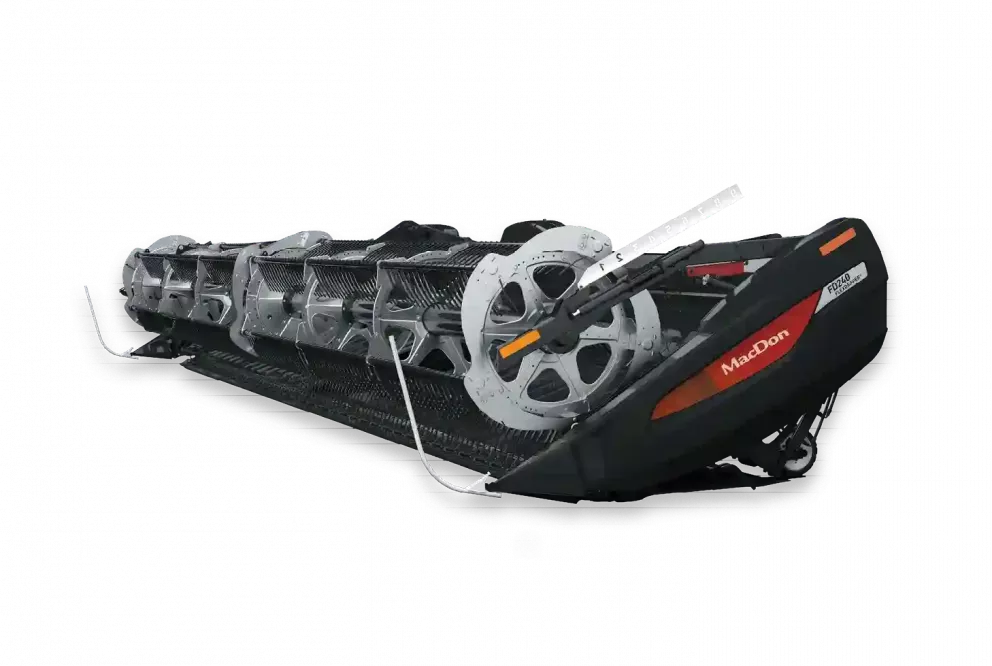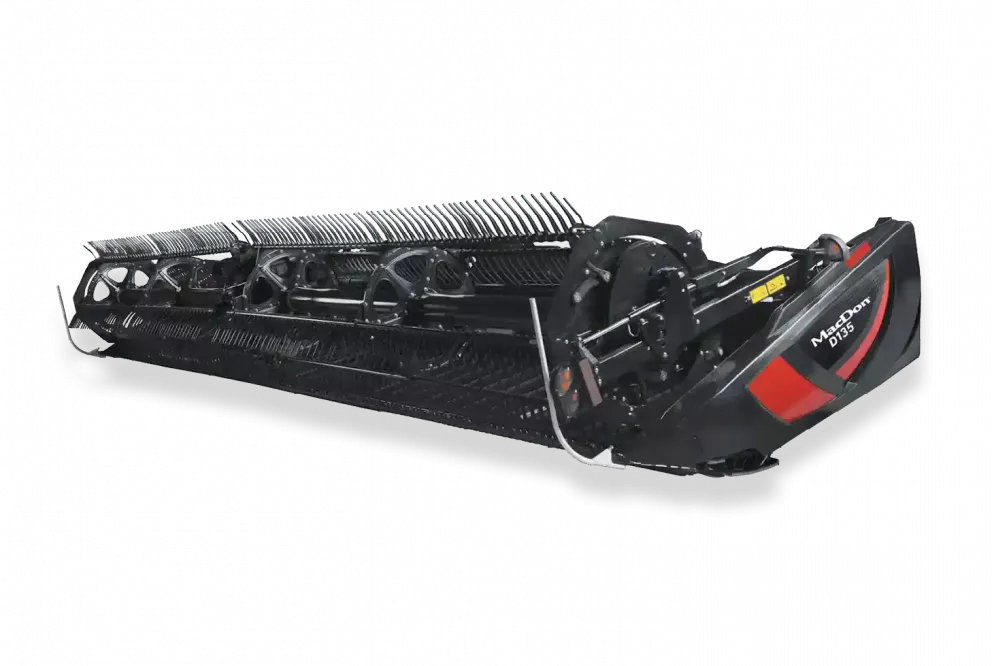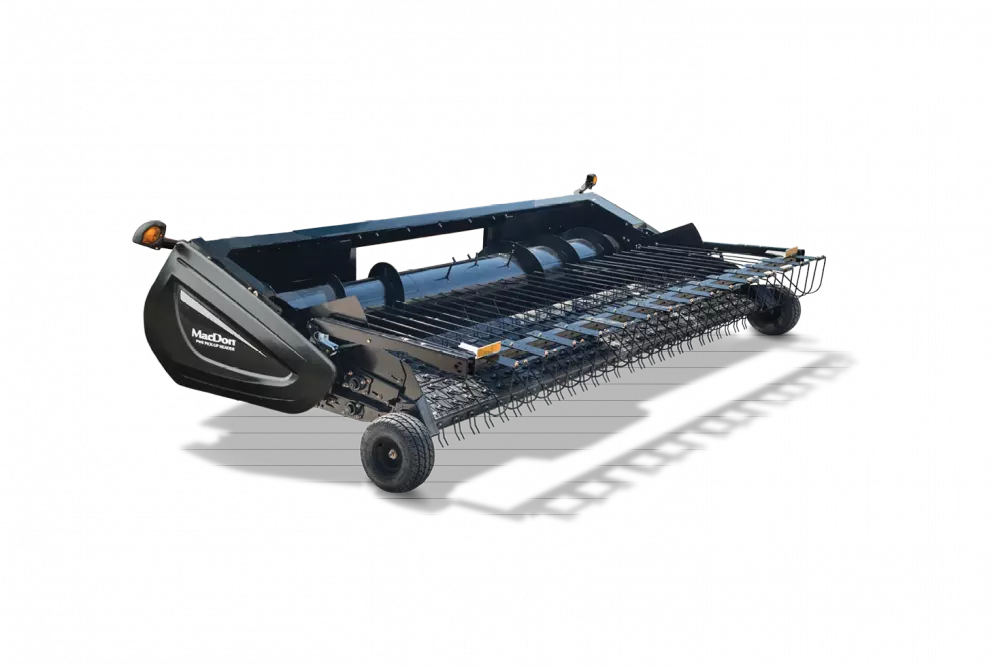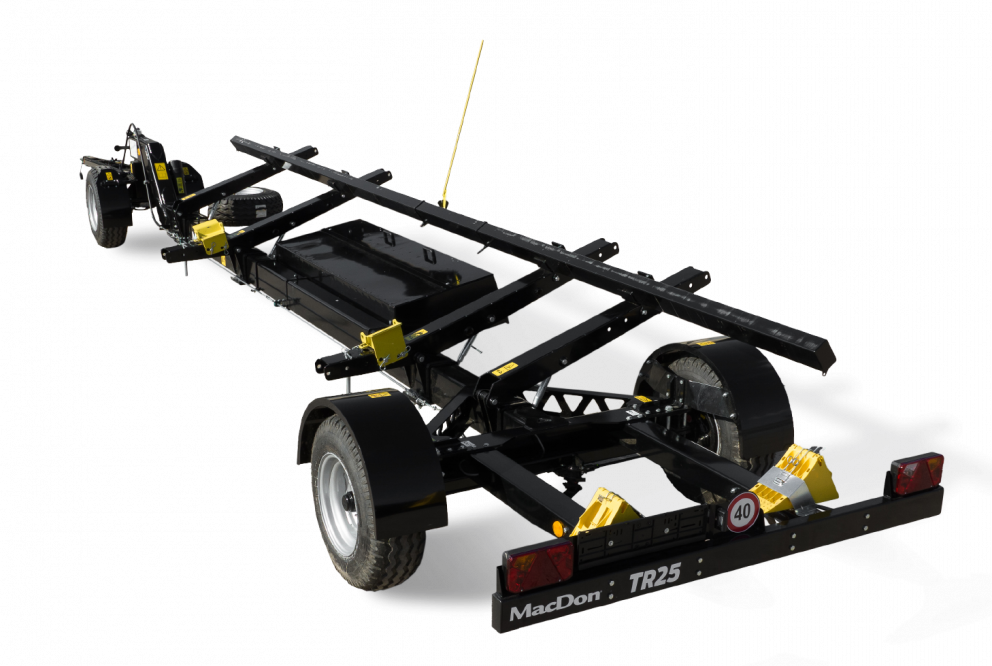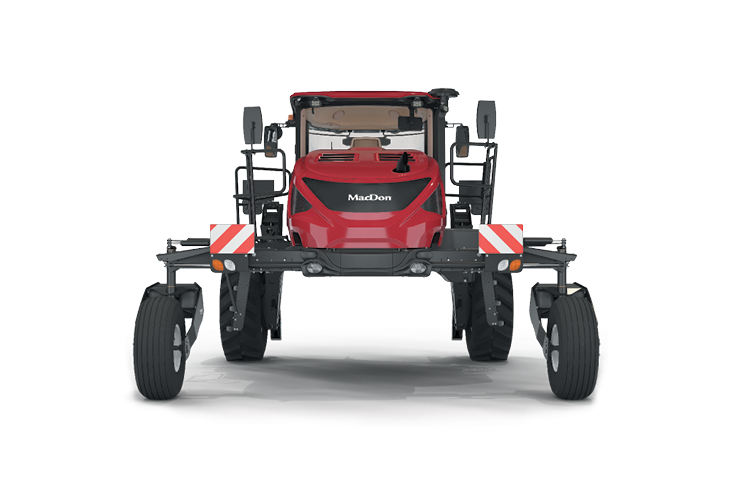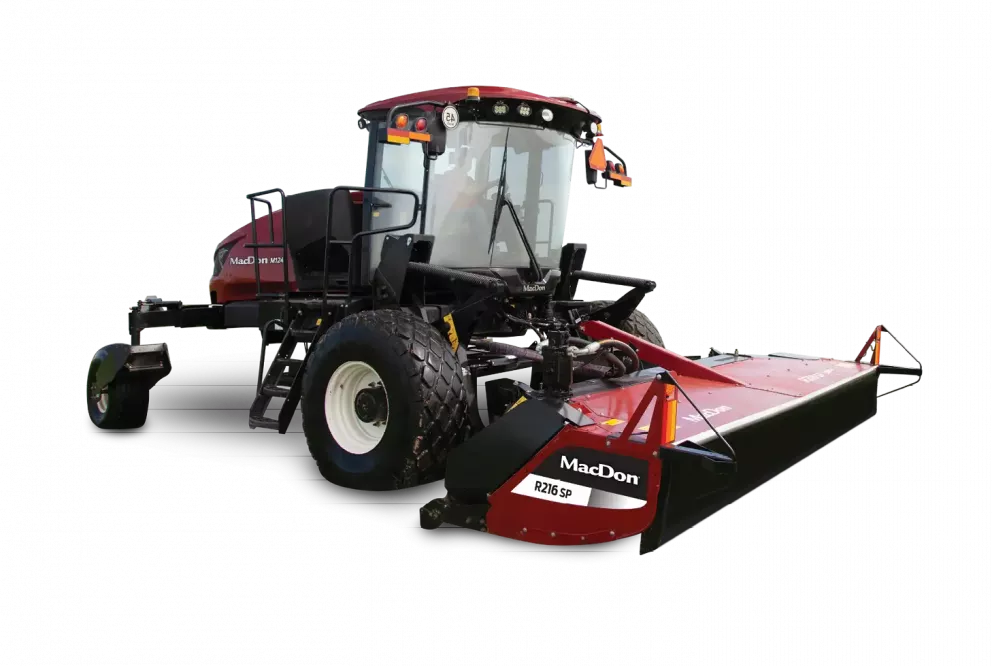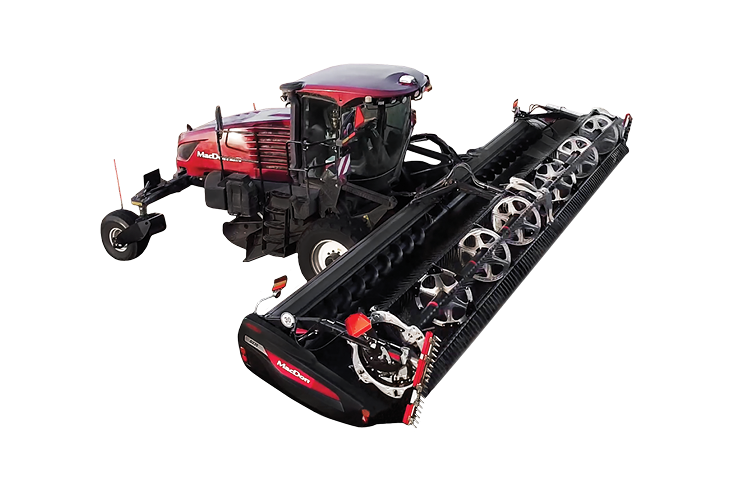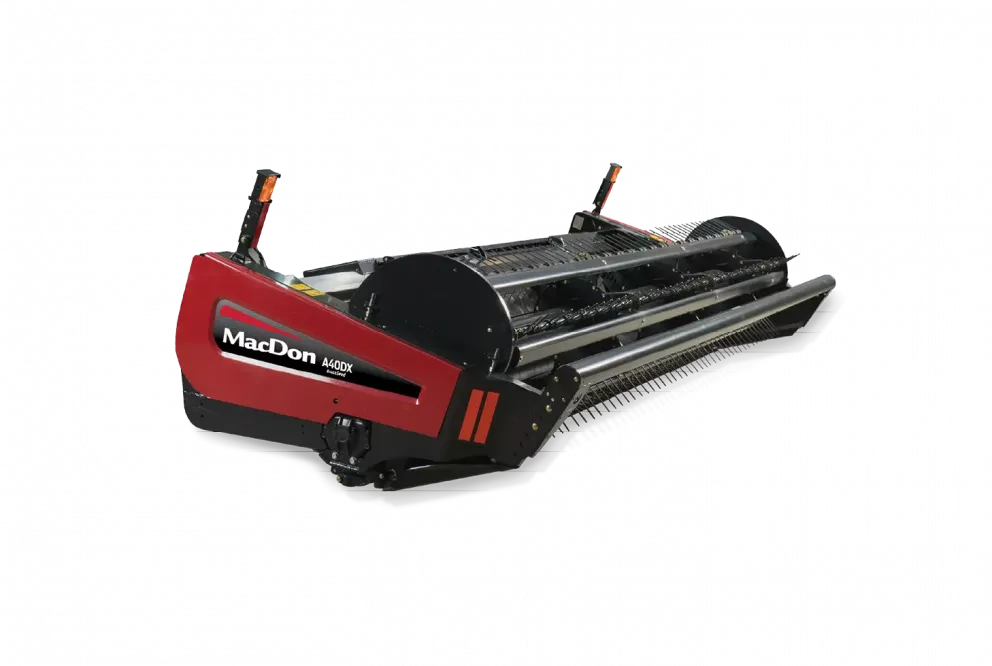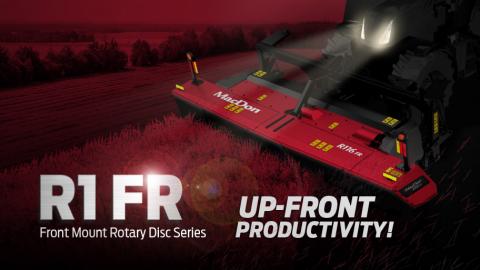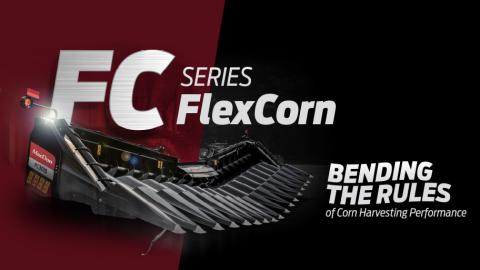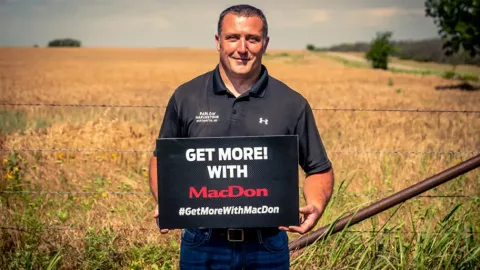Flexdraper® Revolution
Billy Tankard says FlexDrapers are taking over in North Carolina.
IT’S SAFE TO SAY I’M PICKING UP TO FOUR BUSHELS MORE AN ACRE IN THOSE AREAS AROUND THE WOODS WHERE THE BEANS NEVER GET VERY TALL.
The Tankard's have been farming near the town of Bath at the historic junction of North Carolina’s Pamlico and Pungo Rivers for at least five generations. This coastal land was the first in the state to be settled by Europeans back in the late 1600s, and Bath itself can lay claim to not only being North Carolina’s first town but also the home of the notorious pirate Blackbeard.
“I think the farm was my great great granddad’s, I really don’t know,” says Billy Tankard who now runs their 2,000 acre (809.4 hectare) farm with his father William. “My great granddad and granddad were horse traders, and they bought and sold land in the area.”
Today, the Tankards farm corn, wheat, seed soybeans, sorghum and flue-cured tobacco scattered about in a number of small farms in the area. Like most farmers today, they are under pressure to continually expand their operation.
“We went from 800 acres to 1,600 acres (323.7 hectares to 647.5 hectares) a while back, and then up to 2,000 acres (809.4 hectares) when my cousin quit farming and we took over his farm. We just keep trying to pick up land and grow and grow and grow. We’re always trying to get bigger.”
“From my home base I can probably draw a six mile (9.7 km) circle around our land. A lot of our farms only have three or four acre (one or two hectare) fields on them. We have lots of trees around our farms, a lot of small cut up fields. We’ve clay land, sandy land and land that floods partially at high tide."
Tankard says that a particularly notable feature of the land in the area is the number of “v-ditches” present in most fields which are necessary for proper drainage. One of their larger plots, a 30 acre (12.1 hectare) field, has no less than 13 cuts which demands a lot of nimble driving with the combine and other machinery.
Of their 2,000 acres (809.4 hectares), the Tankards usually allocate a little more than half to soybeans and wheat. To harvest this they have traditionally relied on the standard flex auger platforms, just like other farmers in the area have for decades. But two years ago, Tankard saw a MacDon FlexDraper® at the farm show in Louisville, Kentucky, and knew that it was something he wanted to try given the difficulties he had always experienced with his standard platforms.
“The hold back on the regular platforms was that they would drag in downed wheat, which we get a lot of around the woods and headlands. We also had trouble in beans in the afternoons when the platforms didn’t want to feed real good, they’d be putting wads through and the combine would be choking. We were constantly speeding up and slowing down just to keep the machine from jamming.”
Tankard was also less than satisfied with the performance of regular platforms in shorter beans, such as he typically finds in hard areas or at the edges of his fields where they tend to grow slower because of the trees. For these reasons he was eager to try the FlexDraper®.
“We wanted to keep our combine a little longer, but I really wanted to trade my platform for a FlexDraper®. We eventually decided to trade the combine as well and got a 9060 New Holland with a 35’ (10.6 m) FD75 FlexDraper®.”
Now after two bean crops and two wheat crops Tankard reports that he is more than happy with his decision.
“I’m tickled to death with my FlexDraper®. It’s a night and day difference to the normal standard platform. I mean, I can now shave the ground and get those short beans. I could never get them to feed before, but with this FlexDraper® I can get every one of them.”
The FlexDraper® has also proven itself to easily cut beans with higher moisture, which Tankard says is a mixed blessing for them.
“We grow seed beans so we don’t want to be picking if they are higher than 14.5% moisture. With our old platform by the time the sun was going down and hitting the trees, the beans would be getting tough to cut as the moisture crept up. It was easy to know when to stop. But with this FlexDraper® I can keep on getting them. If I’m not careful I’ll start picking wet beans so I’ve really got to keep my eye on the monitor the whole time.”
Tankard says that his issues harvesting wheat have also disappeared since buying the FlexDraper®.
“In wheat this header is phenomenal – it just sails right through it. In downed wheat it just rockets forward and scoops it right up. You can even be picking green stuff and as long as you can get your travel speed set you have no trouble. It never loses a step.”
He says he is even going faster, despite the fact that he increased his header width by five feet (1.5 m) with the FlexDraper®.
“Granted it’s different combines, but I was running a 30’ (9.1 m) conventional platform on our old combine and I was picking at 4 MPH (6.4 km/h). Now I’m running with a 35’ (10.6 m) FlexDraper® and I’m cutting at 4.5 to 5 MPH (7.2 to 8 km/h).”
Another big difference Tankard has noticed is in the increased reliability of the MacDon product.
“With my previous header, my first day in the field with it, it messed up and I had to wait for them to come and work on it under warranty. But I’ve never lost any downtime to that draper, other than stuff that was my fault like getting a piece of wood jammed in the belt. That would happen with any machine.”
According to Tankard, his decision to switch to a FlexDraper® has been shared by a number of other farmers in the area. “The year I got mine, three or four people in the area got them the same time I did, but since then there has been a lot more who have come over to the FlexDraper® concept.” Tankard says he expects the trend to continue.
“All my buddies that have regular platforms have come and watch mine run. One of them last year asked me ‘is it worth it?’ I said ‘it’s worth every dime.’ Well he hemmed and hawed, and hemmed and hawed and finally went out and bought a thirty-footer. Now he says he can do more in a day with his 30’ (9.1 m) FlexDraper® than he could with a 35’ (10.6 m) regular platform. Everyone wants a MacDon FlexDraper® now.”
